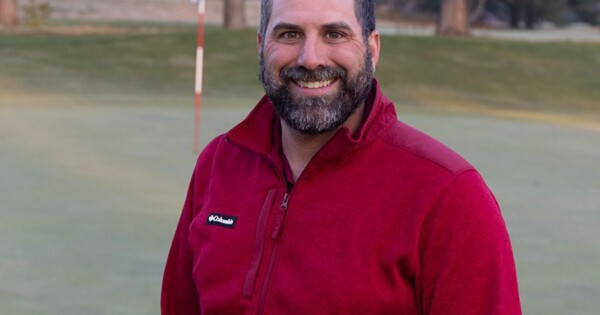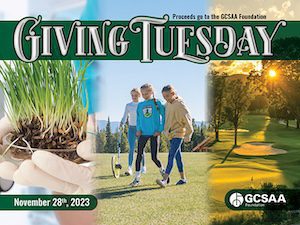To Aerify or Not to Aerify when Using a Preemergence Herbicide
A common question asked in the spring is whether or not to aerify turf when you’ve already applied a preemergence herbicide to control crabgrass. I received this question just the other day so I thought I would share my answer.
First, let’s discuss terminology.
Preemergence herbicides
Preemergence herbicides are applied to a site before weed seeds germinate and prevent weeds from properly emerging or developing. Irrigation or rainfall activates preemergence products once they are applied. These herbicides bind strongly to the soil and they are not leached by rainfall but instead remain in the top inch or so of soil after application.
Large crabgrass and smooth crabgrass are common summer annual weeds in managed turf. Both are collectively referred to as crabgrass. Combined, these crabgrass species are often considered to be the most problematic weed in turf.
Remember, when you choose the right turfgrass species and cultivar for the site and follow proven fertilization, mowing, and irrigation practices, weeds will be less competitive in turf. When you implement good cultural practices but still have some crabgrass, the best approach to controlling crabgrass is to use a preemergence herbicide such as dithiopyr (Dimension), pendimethalin (Pendulum), prodiamine (Barricade), sulfentrazone + prodiamine (Echelon), and others. Since these herbicides work on germinating seeds (prior to emergence, PRE-emergence), you must apply them prior to germination — with the exception of dithiopyr, which also controls crabgrass after germination until it reaches one tiller.
As a note, the Dimension 2EW labels caution against aerification after a preemergence herbicide application. It recommends to cultivate first. The other labels listed above are silent on this topic.
Aerification
Aerification is the disruptive process of working of the soil with limited damage to turf. Aerification is also called coring, cultivation, spiking, and punching. The benefits of core aerification (removal of cores) are increased water infiltration, increased soil air exchange, decreased thatch, and decreased soil compaction.
In the case of spring core aerification of turf treated with a preemergence herbicide, a plug of soil containing turf is physically removed, which also removes the herbicide and subsequently provides an environment for weed seed to germinate. Keep in mind that a single aerification typically affects only 1-5% of the total area depending on tine spacing and size.
So, if we aerify in the spring time, will it negate the preemergence herbicide application and cause crabgrass to go wild? No, is the answer and here’s why.
Preemergence herbicides (mitotic inhibitors) work primarily through preventing cell division in the roots of germinating seeds. Symptoms include swelling of root tips and failure of weed seedlings to emerge (develop leaves) following germination.
After we aerify, a newly germinating crabgrass seed must still send out a root (the first root is called the radicle) which will come into contact with and take up the preemergence herbicide. When it does, the crabgrass plant will fail to emerge and be controlled. Research proves this all to be true (Branham and Rieke, 1986; Johnson, 1982 and 1987).
After aerification, a germinating crabgrass seed could be prevented from emerging by the preemergence herbicide in three different ways (all inside the aerification hole where it is trying to germinate).
- Crabgrass germinates on the edge of the aerification hole and herbicide uptake occurs from undisturbed soil containing the preemergence herbicide (Figure 1, step 3).
- After aerification, plugs (cores) with herbicide are broken up and returned into the holes.
- After aerification, the hole refills (fully or partially) from the sides with existing soil containing the preemergence herbicide when soil sloughs off the edges of the aerification channel.
In each case, crabgrass is controlled. Therefore, aerification following a preemergence herbicide application will not result in increased weed emergence or a loss of weed control.

In the art of full disclosure, I cited three experiments which support my above conclusions, but one report published in 1990 by Monroe et al. only partially agreed. While their bermudagrass research supported the above conclusions, they also found that aerification of creeping bentgrass in North Carolina in May following a late-March PRE application caused an increase in crabgrass when cores where returned but not when removed.
Remember that aerification produces a long-term benefit of improving turf health. With improved turf health also comes increased abiotic stress tolerance and increased turf density which should also help keep out the weeds. Aerification is beneficial and it should not significantly affect herbicide performance based on previous research.
References:
- Branham, B.E. and P.E. Rieke. 1986. Effects of turf cultivation practices on the efficacy of preemergence grass herbicides. Agronomy Journal 78:1089-1091.
- Johnson, B. J. 1982. Oxadiazon treatments on overseeded putting-green turf. Weed Science 30:355-338.
- Johnson, B.J. 1987. Effects of core cultivation on preemergence herbicide activity in bermudagrass. HortScience 22:440-441.
- Monroe, J.H., W.M. Lewis, J.M. DiPaola. 1990. Aerification effects on preemergence herbicide activity. p. 27. In Abstracts, Annual Meeting of the Weed Science Society of America. Montreal, Quebec, Canada. Abstract no. 80.


